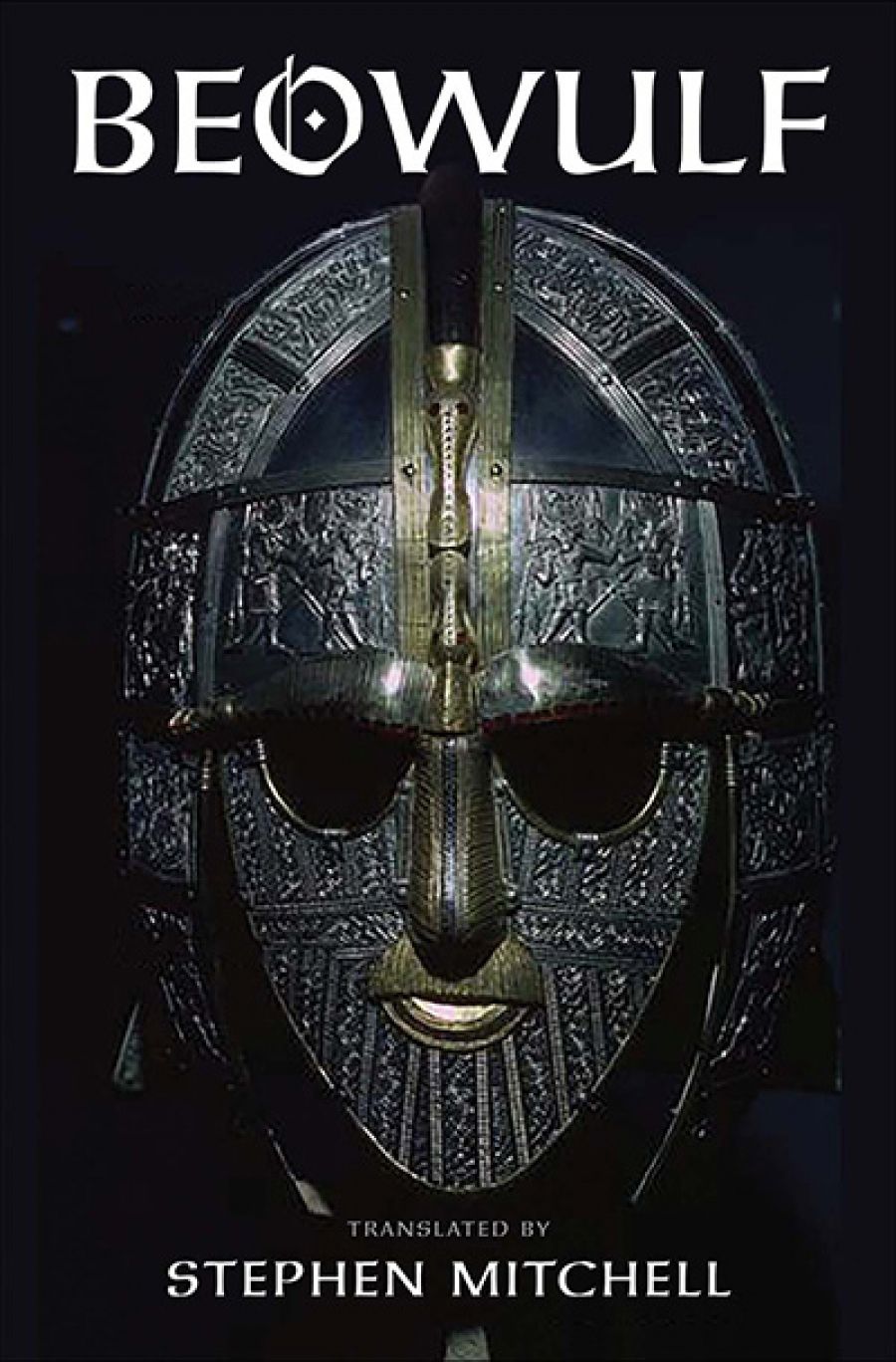
- Free Article: No
- Contents Category: Poetry
- Custom Article Title: Bruce Moore reviews 'Beowulf' translated by Stephen Mitchell
- Review Article: Yes
- Online Only: No
- Custom Highlight Text:
The Old English Beowulf, the most important poem in English before Chaucer, was probably composed in the eighth century. The poem traces Beowulf’s three fights against the monster Grendel, Grendel’s mother, and the dragon. The dragon is defeated, but Beowulf also dies in the battle. The poem ends with an elegiac lament ...
- Book 1 Title: Beowulf
- Book 1 Biblio: Yale University Press (Footprint), $44.99 hb, 256 pp, 9780300228885
Translation theorists distinguish between ‘foreignisation’ and ‘domestication’. ‘Foreignisation’ produces a translation that attempts to capture the otherness of the language and culture of the original. ‘Domestication’ produces a translation that attempts to assimilate the ‘foreign’ text to the contemporary language and culture of the intended audience. William Morris’s translation of Beowulf (1895), is in the first category, and lines 3–4 (Oft Scyld Scefing sceaþena þreatum, / monegum mægþum meodosetla ofteah) become: ‘Oft then Scyld the Sheaf-son from the hosts of the scathers, From kindreds a many the mead-settles tore.’ Mitchell’s translation belongs to the second category, and his version of these lines uses contemporary vocabulary and word order: ‘Often Scyld Scefing shattered the ranks / of hostile tribes and filled them with terror.’
Mitchell’s contemporary language gives clarity to the narrative, and generally produces an elegant and readable text. In the Introduction, he says that his ‘goal throughout has been to make the language of this translation seem transparent and to let the poetry of the original text shine through in the language of today’. I am not convinced, however, that we see much of the ‘poetry of the original’.
Metrically, each full line of Old English poetry has two half lines separated by a clear pause. Each half line has two strong stresses, and the two half lines are joined by alliteration (see lines 3–4 above). Mitchell retains the four-stress line, but largely elides the pause, and uses alliteration more lightly than does the Old English. This generally works well, since a modern audience finds it difficult to understand alliteration primarily as an aspect of metre rather than of style. One consequence, however, is that the translation typically moves towards the metrical pattern of most post-Chaucerian English poetry, and thereby loses touch with the metre and feel of the original: ‘So Grendel continued his vile attacks, / Stalking the fens alone, inflicting / hideous pain on all the people.’
Rhetorical variation (where a concept is stated and then repeated in different words) is central to the style of Old English poetry. Morris’s translation of lines 3–4 keeps to the word order of the original, with the verb (ofteah) at the very end of the clause, along with its direct object (meodosetla). Those who were subject to Scyld’s power are referred to in two half lines that are variations of the concept ‘enemies’: ‘from threatening-troops of harm-doers, from many peoples’. Mitchell collapses the variations into ‘hostile tribes’ and makes the lines conform to Modern English subject-verb-object word order. This is a minor example, but it is typical of the way the translation often ignores the poem’s rhetorical and syntactic structures, which in Old English usually cut across the metrical structure of the full line.
 An illustration by George T. Tobin in Siegfried, the hero of the North, and Beowulf, the hero of the Anglo-Saxons (1909) by Zénaïde A. Ragozin (Wikimedia Commons)
An illustration by George T. Tobin in Siegfried, the hero of the North, and Beowulf, the hero of the Anglo-Saxons (1909) by Zénaïde A. Ragozin (Wikimedia Commons)
Poetic compounds are a distinctive feature of Old English poetry. Mitchell explains that he has often not tried to recreate these, and so in lines 3–4, where Scyld strikes at the heart of his enemies’ society by seizing the meodosetla (‘mead-benches’), Mitchell ignores the compound (although at line sixty-nine he translates medoærn literally as ‘mead-hall’). The mead-hall, along with all its activities of gift-giving, feasting, the singing of stories, and so on, is at the core of heroic society, and it is through a complex pattern of poetic compounds such as meodosetla and medoærn that the values of heroic society are evoked. The good king, for example, is a successful war-leader, and because of this he is also beag-gyfa (‘treasure giver’), gold-gyfa (‘gold-giver’), gold-wine gumena (‘gold-friend of men’), hringa þengel (‘prince of rings’), and so on. The diction of the poem creates the heroic world; it needs to be centre stage.
Mitchell’s Introduction is brief and skewed to an odd reading of the poem’s Christianity. For a reader new to Beowulf, while the linear narrative of the fights against the monsters is clear, it is often difficult to understand the function of the long historical ‘digressions’. Some of these sections deal with complex stories of feuding and revenge, and it would have been useful if Mitchell had provided some guidance about the histories and their characters, and about how they are typically interpreted in Beowulf criticism. The Old English text of the poem is provided on pages facing the translation, but again there is a lack of guidance—for instance, the letters þ (‘thorn’), ð (‘eth’), and æ (‘ash’) are nowhere explained for the non-expert.
All in all, I feel that such established translations as those of Michael J. Alexander (1973) and Seamus Heaney (1999) are superior. Of course, few readers could survive the 3,000-line journey of the poem with a translation of the William Morris kind. But even a ‘transparent’ translation can have a soul.


Comments powered by CComment